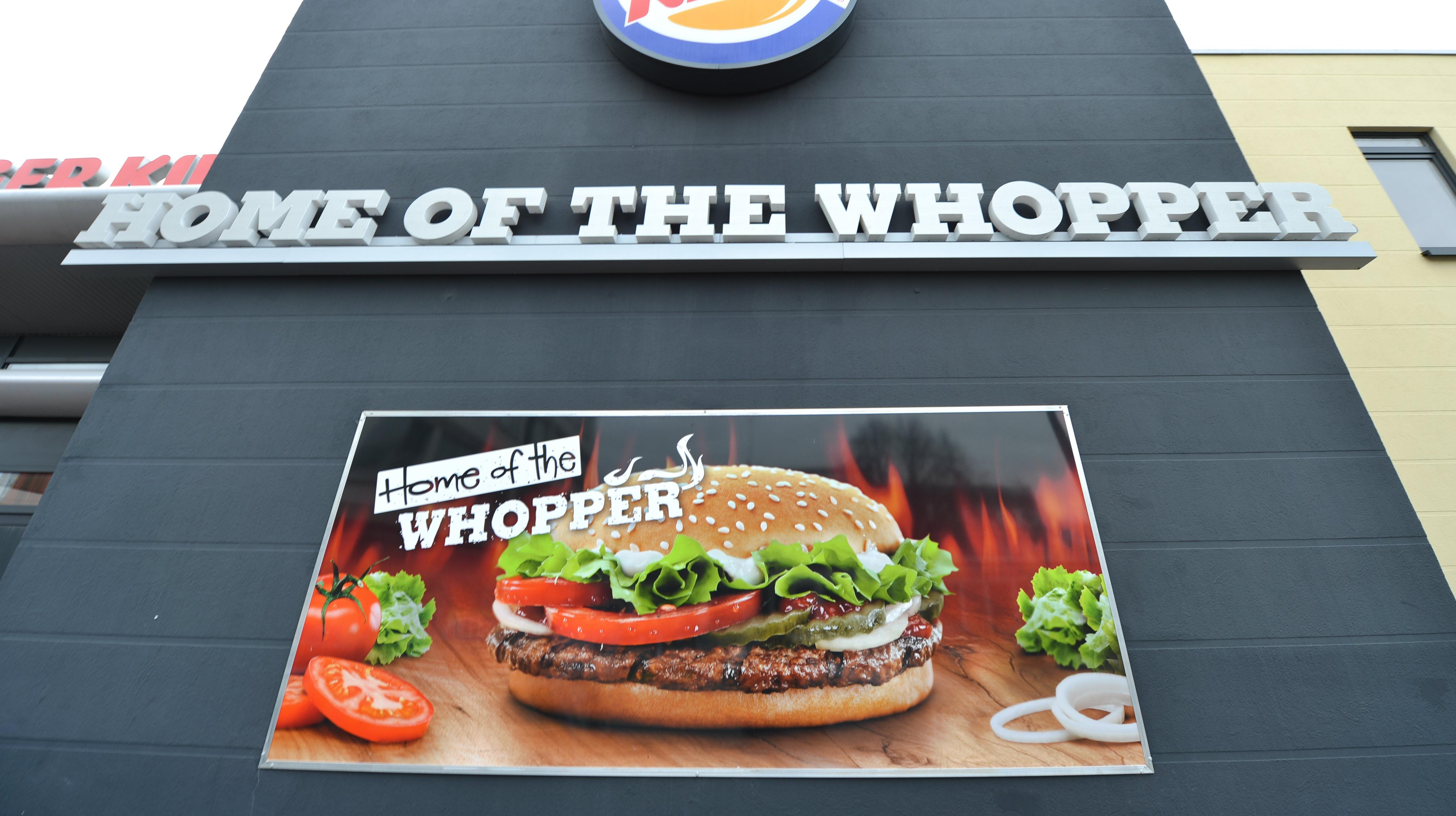The Secret Ways Fast Food Photography Is Fooling You
All the behind-the-scenes magic that makes a Whopper look so good.
Can we really trust the images we see on fast food menus? Last year a man threatened to sue KFC for misrepresenting a chicken sandwich, and now Burger King is facing a lawsuit saying that the Whoppers being served are actually 35% smaller than those depicted in advertisements, NBC News reports. So what really goes on behind the scenes of these fast food photo shoots? Are real burgers being used? And what are the best techniques for making food look as delicious as possible while still accurately conveying what the customer will receive? I reached out to a professional food photographer to get answers.
"I've worked for companies like Burger King, and they use real food," says the photographer, who asked to remain anonymous; we'll call him Jake. "But if you're a consumer, I can see why [you'd] assume it's fake. That's why photographers and stylists make a living. They can take the same ingredients and use light, style, and shoot food in such a way that it looks 100% better than what they get in a fast food restaurant."
Why would fast food need to be altered for photographs?
Even when attempting to give the most accurate representation of a product, there are unavoidable obstacles that may lead to a little tweaking. Jake says that time is the biggest challenge, mostly because the longer a food item is sitting out, the less fresh it will look.
"Food is not necessarily altered, but there are methods for 'preserving freshness,'" Jake says. "An example would be adding water to vegetables using a spray bottle for the appearance of 'freshness.'"
Timing is also an issue when it comes to featuring out-of-season produce in an advertisement. This encompasses any piece of produce that might make it into an image, not necessarily as the main product, but as what Jake calls a "flavor cue." In that case, a fake item may be created.
"Think of something like a breakfast pastry that has apricot," he says. "Apricots aren't necessarily available in December in Chicago. But a specialty artist could replicate a piece of fruit that is so exact you'd never tell."
It's important to note, though, that in Jake's experience, the main product being advertised is never a replication. No longer are photographers and food stylists using mashed potatoes to look like ice cream so it doesn't melt in the photography lights—if ice cream is being sold, you're looking at real ice cream.
"Big brand commercial clients don't allow for the replacement of product," Jake says. "The products need to be on camera."
How do food photographers and stylists get the most appetizing shot?
Throughout the course of a photo shoot, food might be enhanced to look just a little bit tastier, especially as things might dry out—for example, a food stylist might brush canola oil on a bun to rehydrate it and make it glisten.
"If your cheese is melty, a stylist is probably adding some steam to keep it gooey," Jake says. "A super simple trick for something like pancakes with maple syrup is reducing the consistency of syrup. Real maple syrup is very watery, so it will run right off a pancake. If the syrup is reduced to become thicker, it spreads slower, drips slower, and allows a photographer to catch the action at the perfect moment. If you want some really nice water droplets on your lettuce or glass of cold beer, use a spray bottle and some water. Matte spray on a beer pint glass gives the appearance of a 'cold' frosty mug."
And perspective matters—that's why a Whopper might look bigger in a Burger King ad than in real life. "There's a great understanding of lens choice, camera composition, prop choice, and size of props for better scale," Jake says. "If you have a small product, choose an angle that makes your food heroic. If you use a macro lens, you can get so much closer to a product and really make it seem bigger than it is in real life."
How consumers influence food advertising
During a photoshoot, hours are spent making sure food looks its best—every piece of lettuce and blob of mayonnaise in the correct place. On a fast food assembly line, workers don't have the luxury of putting as much time and care into your burger; besides that, the burger is getting wrapped up and tossed into a bag, all of which will alter the look of the sandwich at the moment you eat it. If you're hoping to get some money from a lawsuit, you're out of luck: the food you see is essentially the food you get.
"The days of motor oil on turkeys are long since gone," Jake says. "Luckily consumers have used their voices to hold brands accountable. Oftentimes brands will have someone on set making sure the right amount of product is being used. The bigger the brand, the more speculation surrounds the product, so the more in tune they are to keeping things legit."
